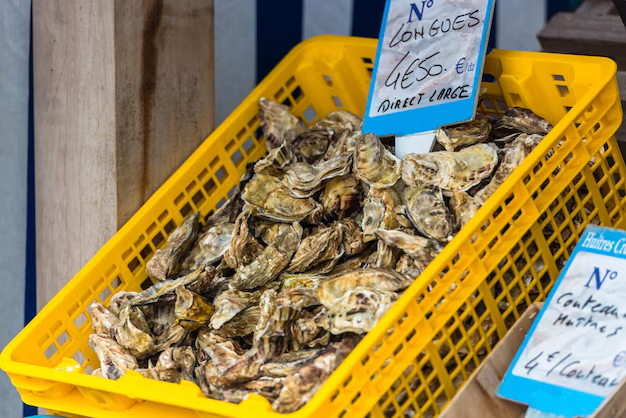Fresh from the Sea: How Long Can Clams Last in Your Refrigerator?
Clams, with their succulent flavors and delicate textures, are a favorite among seafood lovers. However, knowing how long they stay fresh is essential for both safety and taste. Storing them correctly not only prolongs their shelf life but also ensures a delicious meal when they’re finally served. Let’s dive into the world of food storage and explore how long clams remain good in the refrigerator.
🕒 How Long Do Clams Last in the Fridge?
Uncooked, live clams can be stored in the refrigerator for about one to two days. The key here is ensuring that they remain alive until you are ready to cook them. If clams die before cooking, their flavor and safety to eat can degrade rapidly.
Cooked Clams
Once cooked, clams typically last an additional three to four days when refrigerated in a sealed container. This timeline ensures the clams remain safe to eat and maintains their flavor and texture. Coworkers of fresh oysters and other shellfish species, the storage rules remain largely similar for an array of seafood delights.
Signs That Clams Have Gone Bad
It’s crucial to know when clams are no longer viable for consumption:
- Off Odors: Fresh clams should have a clean, ocean-like scent. Any fishy or unpleasant smell is a red flag.
- Texture Changes: Fresh clams have a firm, plump texture. If they appear slimy or dried out, it’s best to discard them.
- Shell Issues: For live clams, shells should be tightly closed or close when tapped. If they remain open, they're likely deceased.
🧊 Best Practices for Storing Clams
Proper storage techniques help maximize the shelf life of your clams. Here are some practical tips for different stages of clam storage:
Live Clams
- Cleaning and Sorting: Begin by scrubbing the clams under cold running water to remove any sand or debris. Discard any clams with broken shells or that remain open after a gentle tap.
- Optimal Environment: Place live clams in a single layer between damp paper towels or a clean cloth inside a bowl. Cover with plastic wrap or a lid, but leave a slight opening for air, and store them in the coldest part of your refrigerator. Avoid airtight containers, as clams need to breathe.
Cooked Clams
- Storage Containers: Transfer any leftover clams to shallow, airtight containers to cool down quickly and evenly in the refrigerator.
- Labeling: Mark containers with the date to keep track of freshness.
Freezing Clams
For longer storage, clams can be frozen:
- Live Clams: Shucked clams can be frozen in their liquor in a freezer-safe container, lasting up to three months.
- Cooked Clams: Freeze cooked clams the same way. Thaw them gradually in the refrigerator before reheating.
🍽️ The Journey from Fridge to Table: Ensuring Quality and Taste
Thawing and Reheating
When ready to use frozen clams, transfer them to the refrigerator to thaw slowly. This method preserves texture and prevents bacterial growth. Reheat cooked clams gently over low heat to maintain their tenderness.
Cooking Fresh Clams
- Preparation: Soak clams in salted cold water for 20-30 minutes to help them expel any sand.
- Cooking Tip: Boil, steam, or sauté clams until their shells open – a surefire indicator that they’re safe to eat.
🌊 Dive Deeper: Understanding Clam Safety and Sustainability
Food Safety Considerations
Clams, like other shellfish, can carry foodborne illnesses if improperly handled. Always ensure:
- Sourcing: Purchase clams from reputable suppliers who follow safety regulations.
- Temperature Control: Never let clams sit at room temperature for extended periods. Proper refrigeration is key.
Sustainability
Choosing clams from sustainable fisheries supports ocean health. Look for labels or certifications indicating eco-friendly practices, which contribute to maintaining clam populations and marine ecosystems.
📝 A Handy Summary: Tips for Storing Clams
Here’s a quick reference to ensure your clams are fresh, flavorful, and safe to eat, enhanced with emojis for easy skimming:
- 🕗 Duration: Live clams: 1-2 days | Cooked clams: 3-4 days | Frozen: up to 3 months
- 🔎 Inspection: Look for closed shells, ocean-fresh scent, and firm texture
- ❄️ Storage:
- Live: in the refrigerator with damp cloths, not airtight
- Cooked: airtight containers in the fridge
- 🌊 Thawing: Slowly in the refrigerator
- ♻️ Sustainability: Select clams from eco-friendly sources
Remember, clams are best enjoyed fresh, offering a delightful taste of the sea. By following these storage tips, you ensure every bite is as delicious as the first time you tasted them.
In conclusion, understanding the nuances of clam storage can vastly enhance your culinary experience. By keeping these guidelines in mind, you ensure that each dish you prepare is not only delicious but also safe and responsible. Whether you’re a seasoned chef or a seafood novice, these insights into clam storage will make your next meal a success. Enjoy your freshly stored clams!
